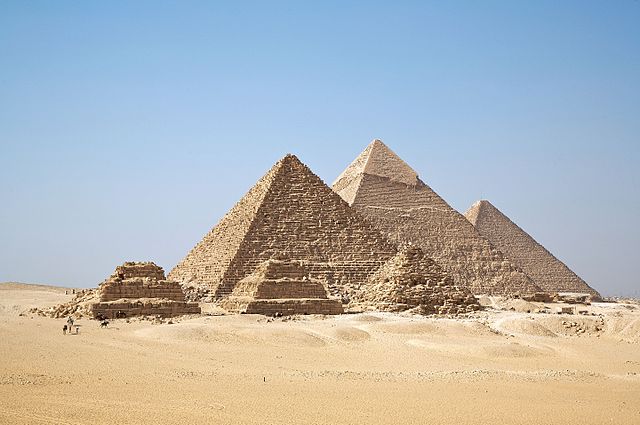
The Great Pyramid of Giza was built around 2500 B.C. and despite it being over 4,500 years old, we are getting new discoveries about the ancient world wonder in 2017. Researchers have found a hidden “void” inside the Great Pyramid of Giza that was previously unknown. Japanese and French scientists studied the pyramid for over two years and made the announcement of their intriguing discovery on Thursday in the peer-reviewed British journal Nature.
Scientists utilize cosmic-ray based imaging to find the mystery void in the Pyramid, which is one of the original seven wonders. The puzzling cavity is about 100-feet-long, about 10-feet-tall, and is located above the pyramid’s Grand Gallery. Scientists are unsure if anything valuable is in the void because it is not accessible. “We don’t know whether this big void is horizontal or inclined; we don’t know if this void is made by one structure or several successive structures,” explained Mehdi Tayoubi from the HIP Institute in Paris. This is the first major inner structure found in the Great Pyramid since the 19th century. The Great Pyramid is also known as Khufu’s Pyramid because it was built during the reign of Pharaoh Khufu who ruled Egypt from 2509 to 2483 B.C.
Researchers used an imaging technique called “muography,” which showers an area with high-energy particles called muons that penetrate substances close to the speed of light. They can penetrate deeply into rock and react when they collide with air molecules and show anomalies. The path of the mons can tell scientists where there are stone and air, alerting scientists of cavities in the solid formations. “Cosmic-ray muon radiography allows us to visualize the known and potentially unknown voids in the pyramid in a non-invasive way,” the authors wrote in the study. The ScanPyramids team used three different muography technologies to confirm the void, but did not want to declare the void as a chamber just yet.
The scientists are not sure why there is a void in the 460-foot-tall pyramid, but one could guess is that the hole in the construction was done after a big drinking holiday where workers were too hungover and decided to bypass a few of the more than 2,300,000 limestone and granite blocks that weigh 2.5 tons. The Great Pyramid was built for Pharaoh Khufu, also known as Cheops, and the two nearby pyramids were built for Khufu’s son and grandson. The next possible step could be to drill a 1-inch hole then have a flying robot explore the curious cavity, but that would require the approval from Egyptian authorities.
[BBC]